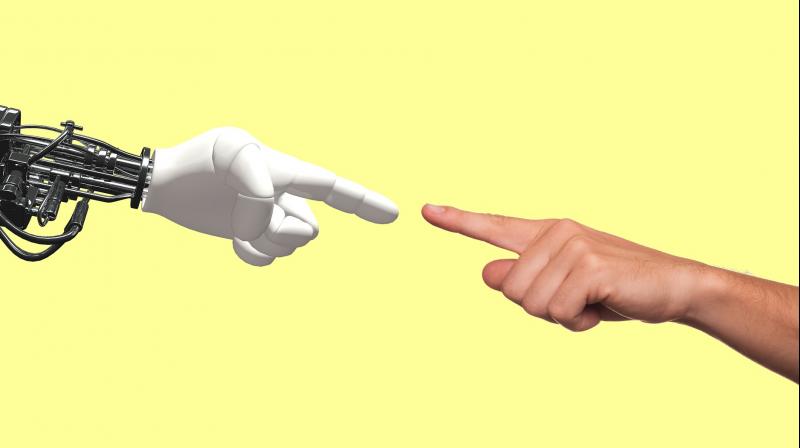With the help of AI, a variety of tasks can be escalated with limited scope for human error. Supply chain is perhaps the most data-rich environment in the businesses of today. A mere mention of Artificial Intelligence would have our heads spinning, thinking about the latest sci-fi movie, robots conspiring to overtake human existence, space travels and whatnot.
copyright by www.deccanchronicle.com
 However, outside the realms of science fiction, the technology has been majorly helping organizations sift through heavy data sets to discover anomalies and best practices. By taking into account enormous data points, organizations can not only envision the future with a certain degree of certainty but also be better prepared for the same.
However, outside the realms of science fiction, the technology has been majorly helping organizations sift through heavy data sets to discover anomalies and best practices. By taking into account enormous data points, organizations can not only envision the future with a certain degree of certainty but also be better prepared for the same.
Data, data, data
Supply chain is perhaps the most data-rich environment in the businesses of today. The chain supports an open flow of data from a diverse set of sources. By the same virtue, supply chain verticals stands to gain a lot by deploying automation. With the help of Artificial Intelligence, a variety of tasks can be escalated with limited scope for human error. For instance, AI can effortlessly blend in data from disparate systems, spread across the supply chain verticals, explore any missing data points or bugs and escalate processes. Besides, machine learning feeds on data; as we go on to feed more data, the system learns on its own and further streamlines the processes.
Optimizing Operations with Historical and Predictive Analytics
Artificial Intelligence & Data Sciences create enough room for faster and accurate decision making. Companies can now compute major chunk of historical data, in order to weed out the errors and optimize production runs and distribution plans. The technology contributes towards better risk management by extracting data from a multiple sources and hence, identifying patterns and risky behaviours.
The technology platform goes through historical data and figures out the best way forward, when the supply chain mix is confronted with a particular risk or challenge. Thus, the technology also suggests steps that should be taken to mitigate the underlined risks. […]
read more – copyright by www.deccanchronicle.com


With the help of AI, a variety of tasks can be escalated with limited scope for human error. Supply chain is perhaps the most data-rich environment in the businesses of today. A mere mention of Artificial Intelligence would have our heads spinning, thinking about the latest sci-fi movie, robots conspiring to overtake human existence, space travels and whatnot.
copyright by www.deccanchronicle.com
Data, data, data
Supply chain is perhaps the most data-rich environment in the businesses of today. The chain supports an open flow of data from a diverse set of sources. By the same virtue, supply chain verticals stands to gain a lot by deploying automation. With the help of Artificial Intelligence, a variety of tasks can be escalated with limited scope for human error. For instance, AI can effortlessly blend in data from disparate systems, spread across the supply chain verticals, explore any missing data points or bugs and escalate processes. Besides, machine learning feeds on data; as we go on to feed more data, the system learns on its own and further streamlines the processes.
Optimizing Operations with Historical and Predictive Analytics
Artificial Intelligence & Data Sciences create enough room for faster and accurate decision making. Companies can now compute major chunk of historical data, in order to weed out the errors and optimize production runs and distribution plans. The technology contributes towards better risk management by extracting data from a multiple sources and hence, identifying patterns and risky behaviours.
The technology platform goes through historical data and figures out the best way forward, when the supply chain mix is confronted with a particular risk or challenge. Thus, the technology also suggests steps that should be taken to mitigate the underlined risks. […]
read more – copyright by www.deccanchronicle.com
Share this: